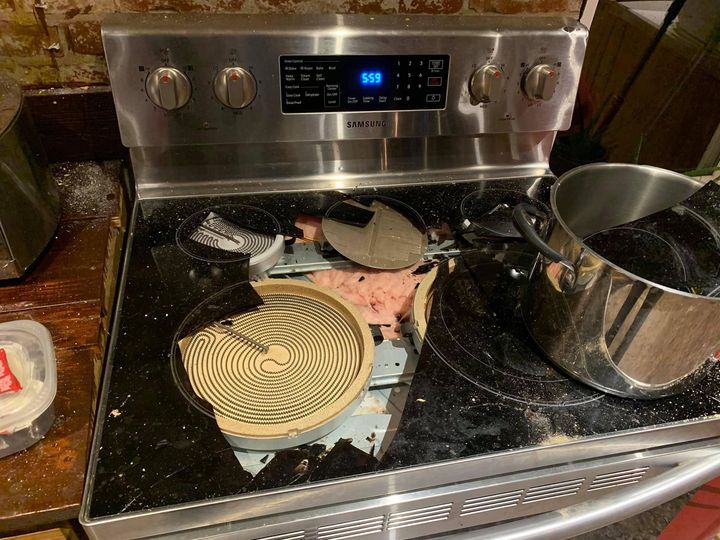Glass top stoves are a favorite choice for many homeowners, thanks to their sleek design and modern appeal. Their smooth, flat surfaces make any kitchen look polished and minimalist, while also simplifying cleanup compared to traditional coil burners. However, despite their elegant appearance and convenience, glass top stoves come with a unique set of risks. One seemingly harmless mistake could turn your stylish kitchen centerpiece into a dangerous, costly hazard: the risk of shattering.

The Appeal and Hidden Risks of Glass Top Stoves
Glass top stoves have surged in popularity due to their streamlined design and ease of maintenance. Unlike traditional stoves with crevices that collect crumbs and spills, glass tops provide a flat, seamless surface that’s easy to wipe clean. Tempered glass is used for these cooktops to ensure durability, but even this strong material has its limits. Under specific conditions, it can crack or even shatter, leaving homeowners with an expensive repair and a safety hazard.
Why Placing a Hot Lid on Your Glass Stove Can Cause It to Shatter
One of the most common yet overlooked mistakes that can damage a glass top stove is placing a hot lid facedown on its surface. While this might seem harmless, it can create a dangerous vacuum seal. Here’s how it happens and why it’s a problem:
- Vacuum Seal Formation: When a hot lid is placed directly on the glass surface, heat gets trapped between the lid and the cooktop. This creates a vacuum seal, causing the lid to stick tightly to the glass.
- Pressure Buildup: As the glass cooktop begins to cool, the trapped heat creates a pressure difference. This imbalance can lead to cracking, which often manifests in a spiderweb-like pattern across the surface.
What starts as a small oversight can quickly escalate into a significant problem, compromising both the functionality and safety of your stove.
The Hazards of a Cracked Glass Top Stove
A cracked glass stove top isn’t just unsightly; it’s a serious safety risk. Cooking on a damaged surface can have dangerous consequences:
- Safety Risks: A cracked cooktop is structurally weakened and may shatter completely under heat or pressure. This could send sharp glass shards flying, risking cuts and burns.
- Heating Problems: Cracks can interfere with the stove’s heating elements, leading to uneven cooking or, worse, electrical short-circuits that could spark a fire.
Ignoring even minor cracks can result in more significant damage over time, so it’s crucial to address the issue immediately.
Tips to Protect Your Glass Top Stove
Preventing damage to your glass stove is easier than dealing with costly repairs or replacements. With a few simple steps, you can keep your cooktop looking pristine and functioning safely:
- Avoid the Hot Lid Mistake: Always place hot lids on a heat-resistant trivet or a cool surface, such as a countertop, instead of directly on the glass. This small adjustment can prevent vacuum seals and cracking.
- Use the Right Cookware: Opt for pots and pans with flat, smooth bottoms to avoid scratching the glass. Be especially cautious with heavy cookware like cast iron, which can cause cracks if dropped.
- Clean Regularly: Wipe down your stove after each use to remove food particles and spills. Even small debris can cause scratches when trapped under cookware, weakening the glass over time.
What to Do If Your Glass Top Stove Cracks
If you notice a crack in your glass cooktop, it’s essential to stop using it immediately. Continuing to cook on a cracked surface increases the risk of complete shattering, which could cause serious injuries. Here’s what to do:
- Assess the Damage: Take a close look at the crack. Small, superficial cracks might be repairable, but deeper or more extensive damage usually requires a full replacement.
- Contact a Professional: For minor damage, a repair technician might be able to fix the crack. However, larger cracks often mean the glass top needs to be replaced. A professional can evaluate the damage and recommend the best course of action.
Keeping Your Glass Top Stove Safe
Glass top stoves are a stylish and functional addition to any kitchen, but they require careful handling to avoid damage. Understanding the risks, such as placing hot lids on the surface, and taking preventive measures can save you from costly repairs and potential injuries.
By following these simple tips—using appropriate cookware, cleaning regularly, and being mindful of how you handle hot lids—you can keep your glass cooktop in excellent condition for years to come. So next time you’re in the kitchen, take a moment to consider these precautions. A little mindfulness goes a long way in preserving the beauty and safety of your glass top stove.